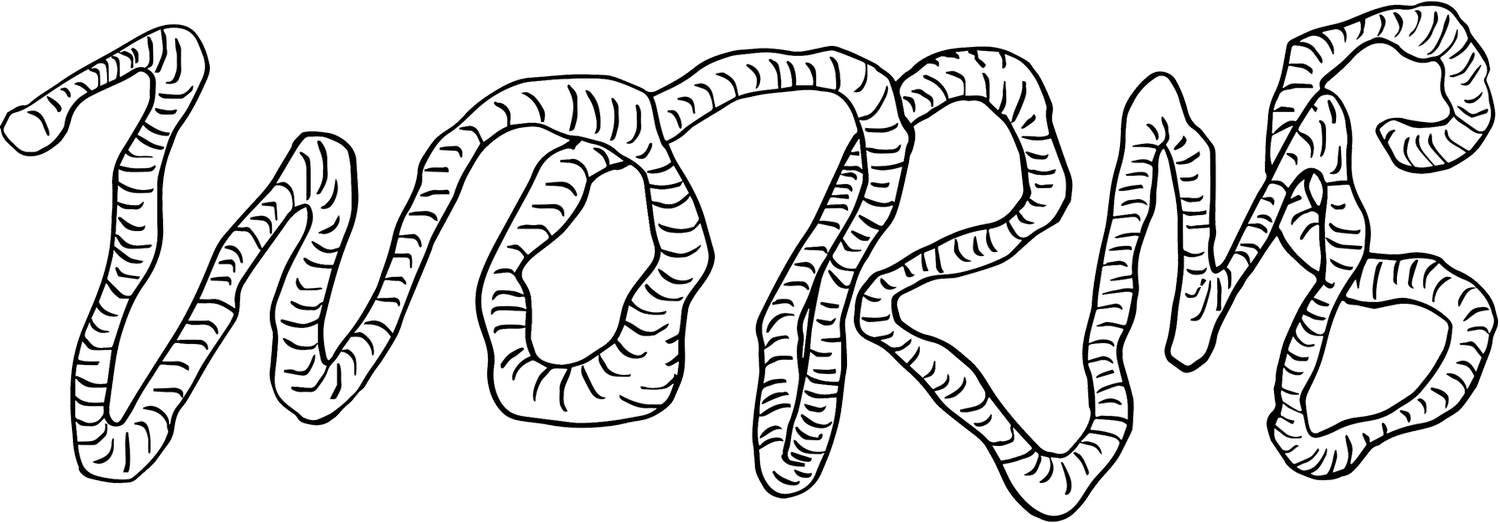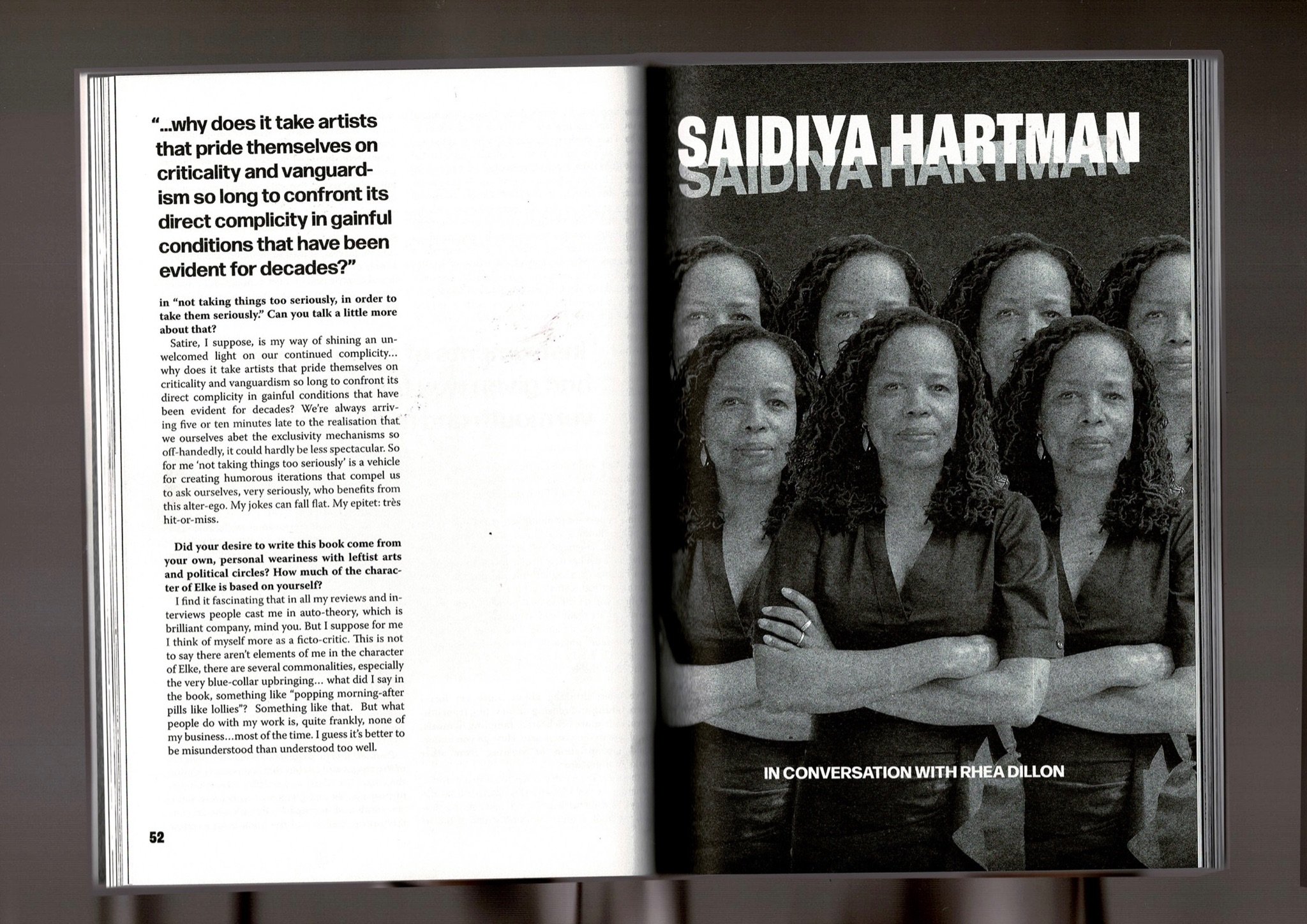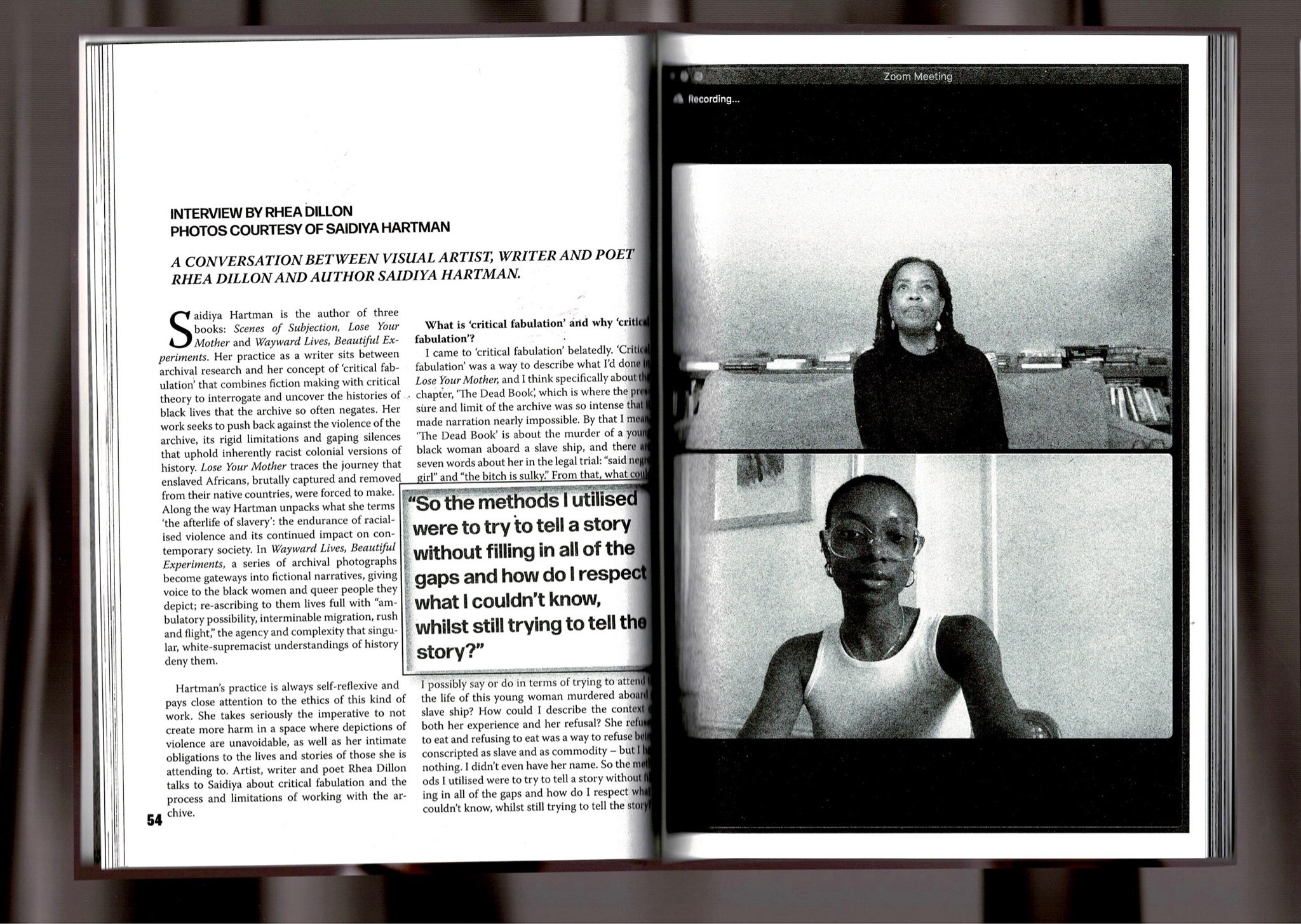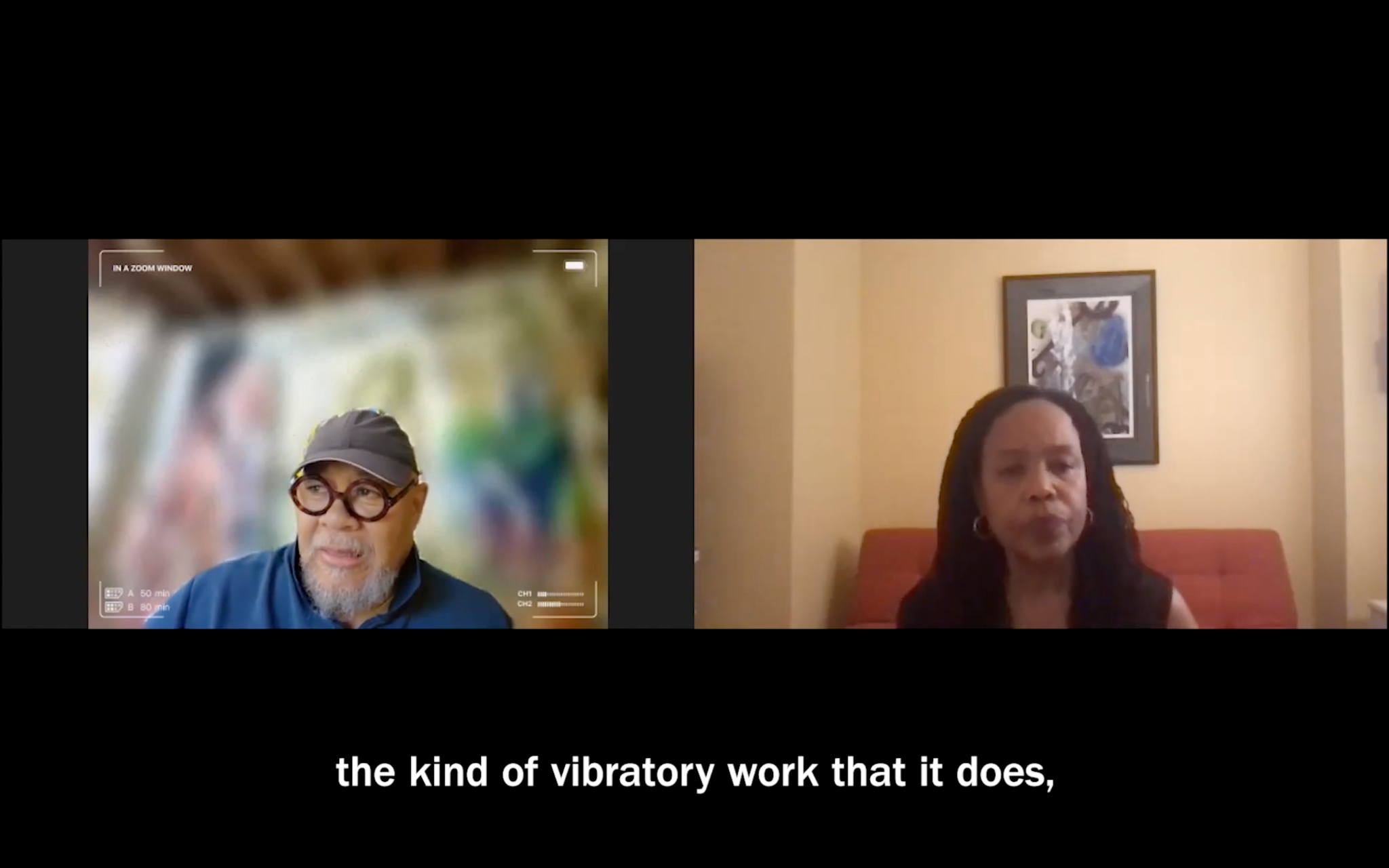The Saidiya Hartman Wormhole
Dearest Fertilisers,
It’s that time of the month; it’s time for exclusive content from the newest issue of Worms. This week we’re bringing you:
Saidiya Hartman in conversation with Rhea Dillon.
Enjoy the illuminating and tender conversation between these two excellent authors, as well as a poem by Rhea Dilllon, written after Hartman, called MOTHER YOUR LOSS, that reflects how Hartman’s writing showed her that “as circumstances changed, so too did the ways we imagined ourselves.”
Of course, we’ve also curated a Saidiya Hartman Reading List for you to browse. Find snippets of her writing, interviews, features and a lot more. Her writing has an urgency and a complexity that is one of a kind so be this your first or hundredth time reading her work, welcome and be ready to sink into the Saidiya Hartman wormhole.
Remember you can get Worms 5 here for a lot more.
Worms HQ xx
RHEA DILLON is an artist, poet and writer that works across mediums to explore themes of displacement, the black diaspora and Blackness as an identity. Her latest work From Landing to Arrival, exhibited in Frieze, deals with the experiences of the Caribbean diaspora. Check it out here or click here to watch her 2018 short film Process about afro hair and afro upkeep.
A SAIDIYA HARTMAN READING LIST
“An Unnamed Girl, A Speculative History” Saidiya Harman for the New Yorker (excerpt from Wayward Lives, Beautiful Experiments: Intimate Histories of Social Upheaval) - SO POWERFUL; MUST READ !!!!!!
What a photograph reveals about the lives of young black women at the turn of the century.
The artist Mary Enoch Elizabeth Baxter wrote a piece in The Inquierer, “Let’s Talk about Thomas Eakins, Philly’s Revered Sexual Predator” (which has a paywalll but got past it by opening on my phone’s browser) after she discovered Eakins’ photographs in Hartman’s New Yorker piece. She explains her horror at finding the image of the unnamed black girl freely available on the website for the Pennsylvania Academy of Fine Arts and details her successful request to take it down and sent to a local African American special collection. Additionally, while she explains the harm such images do to black girl’s psyches and the blatant disregard of dark-skinned bodies or privacy, she reveals she created a series of artistic responses to the work, named Consecration to Mary. They are tender reimaginings of the photograph, where the artist covers the young girl with a blanket, her act of protection over the young girl expanding beyond the digital to encompass the physical realm too.
“[Dewey Crumpler and Saidiya Hartman discuss] subjects including their work, the responsibilities that attend a calling, the exhaustive process of transformation, and the powerful “hum”— the potent frequency—of Black lives.”
2018 interview about working with archives - The Creative Independent
Lose your Mother: A Journey Along the Atlantic Slave Route (2007) - Saidiya Hartman - Hartman 101 A Must.
“The most universal definition of the slave is a stranger—torn from kin and country. To lose your mother is to suffer the loss of kin, to forget your past, and to inhabit the world as a stranger.”
Venus in Two Acts (2008) - Saidiya Hartman
We read this essay for the Worms Bookclub back in May. It was a powerful, concise essay that precedes Lose Your Mother and explores the tensions between representations of Venus in the archive of Atlantic slavery. It powerfully elicits the impossibility (and ethical dubiousness) of filling in the gaps when so much is unknown but contextualising the act of writing and resurrecting, as an act of care in which the solution is to respect the unknown, and hold space for it.
(From her Creative Independent interview linked above)
How Saidiya Hartman Retells the History of Black Life by Alexis Okeowo - The New Yorker
Scenes of Subjection: Terror, Slavery, and Self-Making in Nineteenth-Century America (1997) - this is Hartman’s thesis
MoMA Books That Matter podcast - Hartman talks about writing Wayward Lives, Beautiful Experiments
salt. Is an award-winning play by artist and performer Selina Thompson which recharts the path of the trans-Atlantic slave trade. Over its course, Thompson includes excerpts from Hartman’s LOSE YOUR MOTHER: A JOURNEY ALONG THE ATLANTIC SLAVE ROUTE (2007). She put together a comprehensive list of books, films and Twitter accounts to compliment the show here.
An excerpt from Keeanga-Yamahtta Taylor’s foreword in the new edition of Hartman’s Scenes of Subjection, published in the New Yorker
Artists who have presented work influenced by Hartman:
Garrett Bradley, Arthur Jafa, Simone Leigh, Okwui Okpokwasili, and Cameron Rowland (from MoMA PS1 event)












